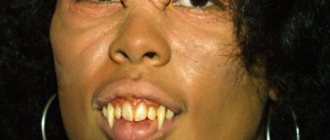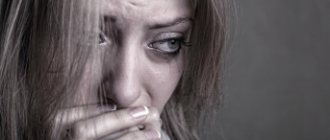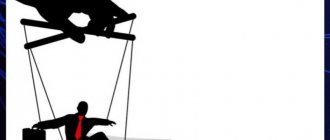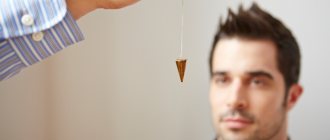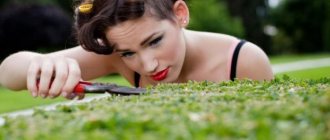Fear has a special meaning in human life.
This feeling can throw one out of balance, disorganizing the life of an individual. Therefore, phobias, born of fear of something, are quite diverse. Among them there is also heliophobia - fear of the sun and sun rays (from the Greek helios - sun and phobos - fear). A small number of people, about 1% of the world's population, are affected by this disease. Adequate therapy allows you to completely get rid of this sinister disorder. When the start of treatment is delayed, serious consequences develop that are dangerous to a person’s health and social activity.
Causes and Effects
Fear of the sun with heliophobia is unfounded, irrational, that is, it does not pose a real threat. Such fear can arise in an individual’s head under the influence of several reasons:
- presence of another phobia. More often these are fears from the hypochondriacal group, for example, the fear of developing skin cancer under the influence of ultraviolet radiation, especially when it is most aggressive;
- negative experience. “Sun fear” may well be the outcome of inappropriate spending time in the sun. An unsuccessful tan, resulting in severe burns on the skin, can not only extinguish the desire to sunbathe in the future, but also develop a persistent phobia of the celestial body. Heat strokes with a subsequent increase in temperature, nausea, and dizziness also give rise to a negative experience. Overheating, accompanied by delusions and hallucinations, further forms persistent, deep convictions of negative solar influence;
- One cannot exclude childhood psychotrauma as the cause of the birth of heliophobia. Moreover, the role of the sun in this situation may turn out to be secondary; the child has simply transferred it from a background meaning to a significant figure. Example: a boy was walking down the street on a hot summer day when the sun was in its active phase. Suddenly, a huge, ferocious dog appeared from around the corner, rushing towards the baby. The boy was madly frightened of the terrible animal, but the scorching sun was “stuck” in his subconscious, firmly embedded in the picture of the incident. Subsequently, the child developed a phobia, but not in relation to the dog, but in relation to sunlight.
In the case when a child receives severe heatstroke with hallucinatory phenomena, the formation of a phobia is also possible. But in this case, the baby perceives the luminary as something fantastic, unreal.
The fear of the sun can be instilled in a person in childhood by parents who terrorize their child about putting on a Panama hat, systematically instilling in them that if they go outside without it, the child risks being incinerated to ashes.
The girl developed heliophobia after removal of a thyroid tumor. Fearing that she would acquire a malignant tumor again, she went to extremes.
With heliophobia, there is no real danger to a person from the sun. The problem is created by the patient’s behavior itself, which limits his life activity, which leads to undesirable consequences.
By limiting exposure to light, a person runs the risk of developing vitamin D deficiency, since the latter is synthesized in the human body under the influence of insolation. This means that he will soon experience disruptions in the functioning of the body, leading to:
- softening of tooth enamel, caries, tooth decay;
- fragility of bones, their deformation, tendency to fractures;
- weight loss;
- fatigue;
- hyperhidrosis;
- muscle cramps.
Often, with heliophobia, the patient's sleep and wakefulness patterns are disrupted: he is active at night and sleeps during the day. This mode slows down the production of melatonin, since the hormone is synthesized at certain hours during sleep: between 24.00 and 5 am.
Melatonin is vital for the human body, as it is involved in many processes. This hormone regulates the activity of the endocrine system, biorhythms, and affects mental and physical activity. It controls our emotions, regulates blood pressure, and controls the functioning of the entire body. Consequently, when melatonin synthesis is disrupted, its functions and control are lost.
As for the social life of a heliophobe, detachment from society and being in a confined space leads to a severance of friendly and business ties and to complete isolation. Depression thrives against the backdrop of loneliness. A person is in a state of constant tension and fear. In this case, photophobia can reach the point of delusional ideas.
A common consequence of the disorder is the development of other phobias:
- social phobia – fear of people;
- agoraphobia - fear of open spaces.
People suffering from photophobia are unable to live a full life. The disease deprives the person of the opportunity to choose leisure at will, engage in professional activities, study, devote leisure time to entertainment, and hobbies. Starting a family and having children is also difficult. Any activity that requires execution during the daytime is at risk.
Symptoms of heliophobia
The main symptom of the disease is limiting or completely avoiding sun exposure. At the same time, a person is almost constantly indoors during daylight hours and does not leave his home.
The severity of destructive behavior depends on the severity of the disorder. With a mild form of heliophobia, the patient still allows himself to go outside during daylight hours. But, of course, with a full arsenal of protective equipment: glasses protect your eyes, clothes are put on in such a way as to hide open areas of the body as much as possible. What remains uncovered is covered with auxiliary means: gloves, scarves, scarves, hats. In such equipment a person goes to work, to the store, anywhere.
In the initial stage of the disease, the individual goes outside during the day under an umbrella and applies sunscreen in large quantities.
As the process progresses, it causes the formation of avoidant behavior. People go out less and less during the day. It creates twilight in the apartment, protecting itself from the sun's rays: covering the windows with blinds and blankets. Selects work that requires night activity.
Panic attacks are a typical accompaniment of the disorder. In general, a heliophobe is an ordinary person, with a clear consciousness, sound thinking, and aware of the absurdity of his situation. But as soon as he inadvertently enters the insolation zone, consciousness seems to turn off. Stupor, panic and chaos ensues. The patient feels trapped. Attention is scattered, it is difficult to make a constructive decision. Tachycardia develops, a feeling of suffocation appears, trembling throughout the body, and cold sticky sweat appears. The condition is accompanied by unbearable headaches. Anxiety and fear are so pronounced that they provoke a powerful surge of adrenaline, which triggers all the symptoms of a panic attack. Nausea, vomiting, and loss of consciousness may occur. There is only one desire left: to run to safety.
You can help an alarmist by taking him into the shade if it is not possible to go indoors.
Treatment of photophobia
If tolerance to light does not recover naturally, you should consult a doctor.
If photophobia is accompanied by acute pain in the eyes, you should consult an ophthalmologist as soon as possible - there may be significant damage to the structures of the eye.
If you have other symptoms (headache, fever, nausea), you should first consult a general practitioner (general practitioner, family doctor or pediatrician), who will understand the causes of the disease and, if necessary, refer you to a neurologist.
Treatment of photophobia consists of eliminating the cause that led to the symptom. During the treatment period, the doctor may recommend wearing glasses with tinted lenses to eliminate discomfort.
Don't get confused!
Heliophobia, as a separate phobia, is formed as a mental disorder, devoid of any real threat from health.
Do not confuse a pure phobia with a fear of light caused by specific diseases:
- Keratoconus is an eye disease. The action of sunlight causes a special, increased sensitivity.
- Migraine – bright daylight provokes headaches.
- Xeroderma pigmentosum - the slightest exposure to ultraviolet radiation forms a burn on unprotected skin.
- Gunther's disease. This is the name of a genetic disease, which, as in the previous pathology, causes skin changes in contact with ultraviolet rays in the form of ulcers. Subsequently, scars remain in their place.
- Porphyria - an increased content of porphyrins in the body provokes multiple pathological changes, including photodermatosis. It manifests itself as hyperpigmentation, the formation of ulcers, erosions, and cracks in the skin.
In all of the above cases, heliophobia is justified, bringing real bodily suffering to the patient. For medical purposes, these pathologies even require photorestriction. They cannot be regarded as mental heliophobia, which should be taken into account when diagnosing the disease.
Photophobia can also occur as part of other mental disorders. A typical example is schizophrenia. However, in this case, the phobia is unrealistic: the patient is afraid to go out into the sun, justifying this by the fact that he will turn into a black man.
Another patient had a dream where his loved ones were afraid to go out into the world because they would shrink in size. The dream provoked the development of sunphobia in him, which is why the patient radically limited his exit from the house for a long time.
Therapy
Heliophobia requires professional help, especially at the initial stage of treatment. Treatment of the disease is carried out on an outpatient basis. Hospitalization is rarely necessary when the situation reaches a critical point.
Treatment of the disorder primarily comes down to the use of psychotherapeutic methods :
- Cognitive behavioral therapy uses the method of immersing the client in a traumatic situation and teaching how to get out of it using rational methods. Immersion, that is, access to the sun, is carried out gradually.
- Psychoanalysis will help reveal the underlying cause of the disorder and get to the bottom of it.
- Hypnosis is considered a particularly effective treatment for phobias. In a short period of time, it allows you to eradicate the problem without much effort for the client. By putting a person into a trance state, the specialist gets the opportunity to work with his unconscious. The hypnotherapist is thus able to influence a person’s ingrained attitudes acquired in childhood, identify traumatic events, change the patient’s attitude towards fear and help form an adequate model of behavior. For the client, this method is considered gentle because it does not cause tension or anxiety, and the treatment process is hidden from the patient’s consciousness. He is given the opportunity only to enjoy the result.
- In the compensated stage of the disease, auto-training and relaxation activities are available for patients.
Drug treatment is used in some cases. For depression, antidepressants are prescribed. To relieve panic attacks, the patient must be prescribed anti-anxiety medications. To relieve emotional stress, sedatives are used.
Most heliophobes take vitamin D to smooth out developing hypovitaminosis or compensate for it with nutrition.
Heliophobia is a mental disorder with a favorable prognosis. Stopped at an early stage, the disease goes away without a trace. The advanced form is dangerous because it causes disturbances in the mental activity of the patient.
Help from loved ones
If a loved one suffers from heliophobia, special attention should be paid to this. It is worth taking seriously the experiences and manifestations of the disorder. During conversations you should not use the following expressions:
- “Try to overcome fear through strength!”
- “It’s the sun, how can you not love it!”
- “Just think you’ll get burned just once!”
- “You feel bad from your own inventions!”
Such phrases devalue feelings and confuse anyone, especially those with a disorder. It must be taken into account that heliophobia causes so much inconvenience and suffering to its owner that devaluing words only add to the burden. After this, the thermophobe may no longer seek support. This can significantly aggravate the situation and lead to self-isolation.
It is recommended to learn about the feelings that a heliophobe experiences during painful reactions. Try to ask leading questions about when the first symptoms began to appear and what helped to cope with the emergency situation. After clarifying all the circumstances of the disorder and its course, the heliophobe should be gently led to the need to seek help from a specialist. If the heliophobe refuses and is not ready to go for help, you can go to the appointment without him. Using the information received, you can get recommendations from a psychologist or psychotherapist.
If there is no one to entrust this problem to, and the symptoms of the phobia become too painful, regularly use the services of a qualified psychologist and psychotherapist - Andrey Filippov. Consultations can take place in the office or online. If the recommendations are followed, a sustainable result from the treatment is guaranteed. Remember that mental health is an important part of self-care!
